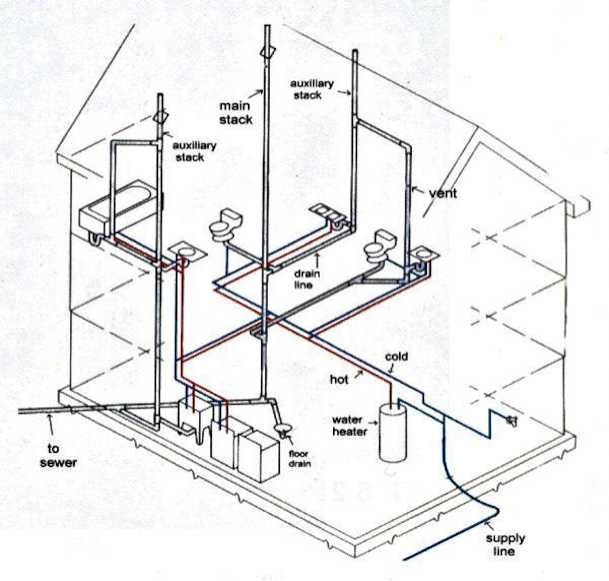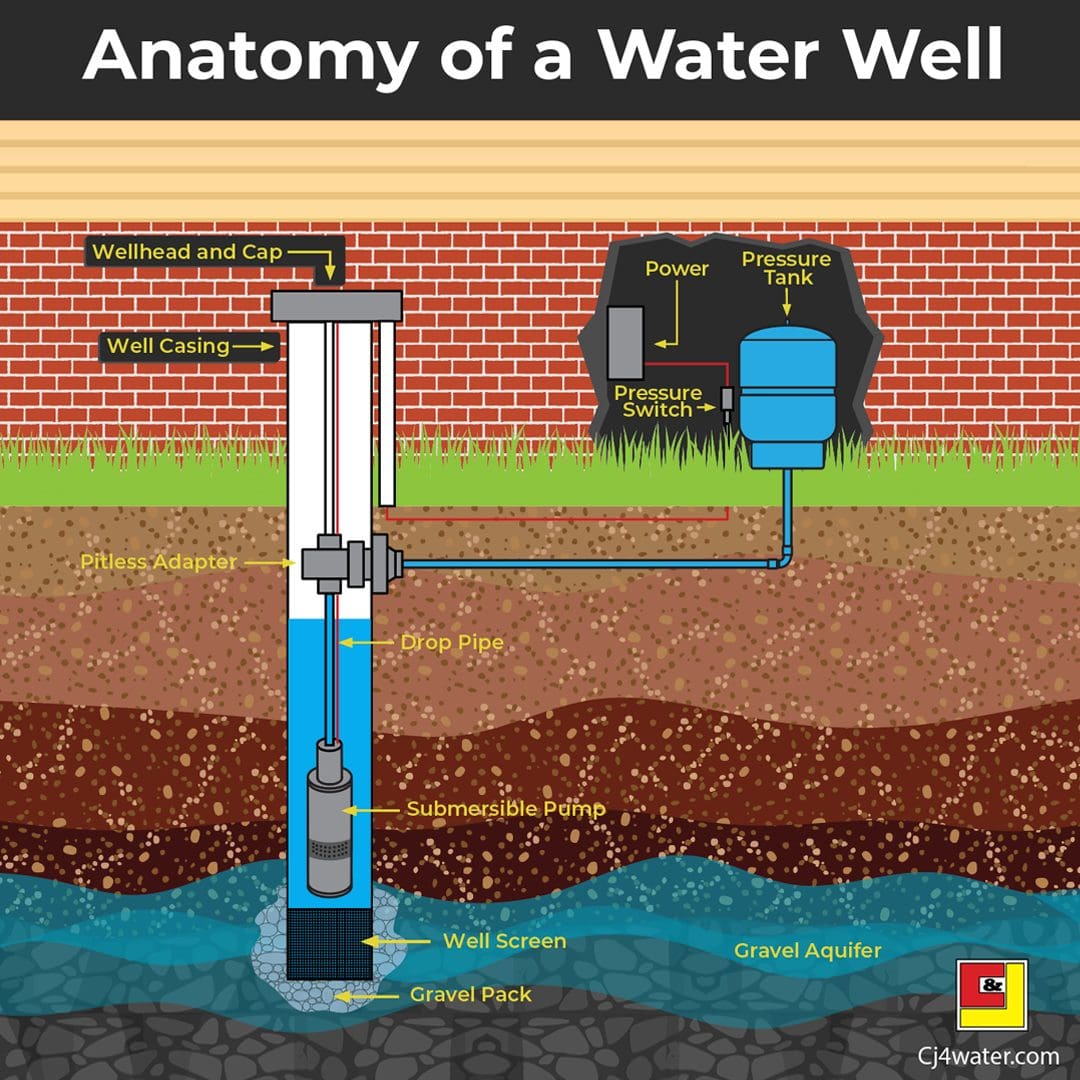What are your opinions on Anatomy of a House: Understanding the Components?

Understanding exactly how your home's pipes system works is necessary for every house owner. From delivering tidy water for drinking, food preparation, and showering to safely removing wastewater, a properly maintained pipes system is crucial for your family members's health and comfort. In this comprehensive guide, we'll discover the complex network that makes up your home's plumbing and offer ideas on upkeep, upgrades, and dealing with typical concerns.
Intro
Your home's pipes system is more than just a network of pipes; it's a complicated system that guarantees you have accessibility to clean water and effective wastewater removal. Knowing its elements and how they work together can assist you prevent expensive repair services and make certain everything runs smoothly.
Fundamental Components of a Pipes System
Pipelines and Tubes
At the heart of your pipes system are the pipes and tubing that carry water throughout your home. These can be made of various products such as copper, PVC, or PEX, each with its benefits in terms of toughness and cost-effectiveness.
Components: Sinks, Toilets, Showers, etc.
Fixtures like sinks, toilets, showers, and tubs are where water is utilized in your home. Comprehending how these fixtures attach to the pipes system assists in detecting troubles and preparing upgrades.
Valves and Shut-off Points
Shutoffs regulate the flow of water in your plumbing system. Shut-off shutoffs are crucial throughout emergency situations or when you need to make repairs, permitting you to separate parts of the system without disrupting water circulation to the entire house.
Supply Of Water System
Main Water Line
The main water line attaches your home to the local water or a private well. It's where water enters your home and is distributed to numerous components.
Water Meter and Pressure Regulator
The water meter procedures your water usage, while a pressure regulator makes certain that water moves at a risk-free pressure throughout your home's pipes system, stopping damage to pipelines and components.
Cold Water vs. Hot Water Lines
Understanding the difference between cold water lines, which provide water directly from the major, and warm water lines, which carry warmed water from the hot water heater, helps in repairing and planning for upgrades.
Water drainage System
Drain Pipes Pipeline and Traps
Drain pipelines bring wastewater away from sinks, showers, and bathrooms to the sewage system or sewage-disposal tank. Traps protect against drain gases from entering your home and additionally catch debris that might trigger clogs.
Air flow Pipelines
Air flow pipelines enable air into the water drainage system, protecting against suction that might slow water drainage and cause traps to vacant. Proper ventilation is essential for preserving the honesty of your plumbing system.
Relevance of Proper Drain
Ensuring correct drainage stops back-ups and water damage. On a regular basis cleaning drains and preserving traps can stop costly repair work and expand the life of your pipes system.
Water Heating Unit
Kinds Of Water Heaters
Hot water heater can be tankless or typical tank-style. Tankless heaters warm water as needed, while containers save heated water for prompt usage.
Updating Your Pipes System
Reasons for Upgrading
Upgrading to water-efficient components or replacing old pipes can enhance water top quality, reduce water bills, and enhance the worth of your home.
Modern Pipes Technologies and Their Benefits
Check out technologies like clever leakage detectors, water-saving toilets, and energy-efficient water heaters that can conserve cash and lower environmental influence.
Expense Factors To Consider and ROI
Compute the upfront costs versus long-lasting cost savings when taking into consideration pipes upgrades. Many upgrades spend for themselves through reduced utility bills and fewer repair services.
Just How Water Heaters Attach to the Plumbing System
Comprehending exactly how water heaters link to both the cold water supply and warm water circulation lines assists in identifying issues like insufficient hot water or leaks.
Upkeep Tips for Water Heaters
Routinely flushing your water heater to eliminate sediment, inspecting the temperature settings, and examining for leaks can extend its lifespan and boost power performance.
Usual Pipes Concerns
Leakages and Their Reasons
Leaks can occur due to aging pipelines, loosened installations, or high water pressure. Dealing with leaks without delay protects against water damages and mold growth.
Obstructions and Clogs
Blockages in drains and commodes are usually brought on by purging non-flushable items or a buildup of oil and hair. Making use of drainpipe displays and being mindful of what goes down your drains pipes can stop clogs.
Indications of Pipes Problems to Expect
Low tide pressure, slow-moving drains, foul odors, or abnormally high water bills are indicators of prospective plumbing troubles that ought to be addressed without delay.
Pipes Upkeep Tips
Regular Examinations and Checks
Arrange annual pipes evaluations to capture issues early. Try to find signs of leakages, rust, or mineral accumulation in taps and showerheads.
DIY Upkeep Tasks
Easy jobs like cleaning tap aerators, checking for commode leakages utilizing color tablets, or shielding revealed pipes in chilly climates can prevent significant plumbing problems.
When to Call an Expert Plumber
Know when a pipes issue needs specialist experience. Attempting complicated repairs without appropriate knowledge can cause even more damage and higher fixing costs.
Tips for Minimizing Water Usage
Basic behaviors like dealing with leaks immediately, taking much shorter showers, and running full tons of washing and dishes can save water and lower your utility costs.
Eco-Friendly Plumbing Options
Think about lasting pipes products like bamboo for flooring, which is durable and green, or recycled glass for countertops.
Emergency Readiness
Actions to Take Throughout a Pipes Emergency situation
Know where your shut-off valves are located and just how to switch off the supply of water in case of a burst pipeline or significant leak.
Significance of Having Emergency Situation Contacts Handy
Maintain call details for neighborhood plumbings or emergency situation solutions conveniently available for fast feedback throughout a pipes dilemma.
Ecological Influence and Preservation
Water-Saving Components and Devices
Mounting low-flow taps, showerheads, and toilets can considerably decrease water usage without sacrificing performance.
DIY Emergency Fixes (When Applicable).
Short-lived solutions like making use of air duct tape to patch a leaking pipe or placing a bucket under a leaking faucet can reduce damage until a specialist plumber gets here.
Verdict.
Comprehending the anatomy of your home's pipes system empowers you to maintain it efficiently, saving time and money on repairs. By complying with routine upkeep routines and staying educated concerning contemporary plumbing technologies, you can guarantee your plumbing system runs successfully for several years to find.
HOW YOUR PLUMBING SYSTEM WORKS
Which Pipes Do What?
Blue lines = fresh water supply entering the building Red lines = hot water supply entering the building Grey lines = pipes carrying waste away from the building and venting pipes carrying gases away from the building (through the roof) YOUR MAIN PLUMBING SYSTEMS
There are two main plumbing systems that support your home s basic plumbing needs one that brings clean water into your home, and one that sends dirty water away from your home. Connected to the toilet, bath, shower, and other faucets in your home, these two systems keep your water flowing in the right directions.
ACCESSING FRESH WATER
Fresh and clean water is brought into your home through the main water supply line . Filtered through one pipe, this water is pressured to flow into the various fixtures in your home at any given time.
This water can be sourced from a well located on your property, a pond or river (mostly cottages), or, as in most cases, from the city s municipal water treatment centre. However, it is important to note that water that is untreated, such as the water siphoned from ponds or rivers, may not be safe to drink. Personal water supplies always need to be treated for hardness and contaminants before consumed.
MUNICIPAL WATER SUPPLIES
Improve taste and odour Remove sediment Eliminate hardness Reduce chlorine COLD WATER SUPPLY VS. HOT WATER SUPPLY
Cold water flows into your home or building through the service line, which then distributes hot or cold water to your fixtures. This line is most commonly run through a central column that runs floor to floor. Hot water runs in short and straight pipes as the longer the pipeline, the more heat that will be lost in the transfer. Having shorter pipes also allows residents to access hot water more quickly.
WASTE WATER SYSTEM
Your wastewater system is divided into two parts pipes that send wastewater away from your home and venting pipes that send sewer gas away from your home. Sewage water travels through pipes that flush the water and waste towards local sewers that are operated and managed by your city or town. Most sewer systems rely on gravity to move the wastewater to where it needs to go.
The further away from your toilet or sink, the larger wastewater pipes become. This allows for waste to be disposed of from various parts of your home or business at once without pipe blockages. The angle and flow of these pipes are also essential for keeping your waste pipes clear of build up.
https://harrisplumbing.ca/how-your-home-plumbing-system-works/

Do you like more info about ? Try to leave a review down the page. We'd be happy to see your opinion about this write-up. Hoping that you come back again before long. Sharing is good. Helping people is fun. Thanks so much for going through it.
Contact Us